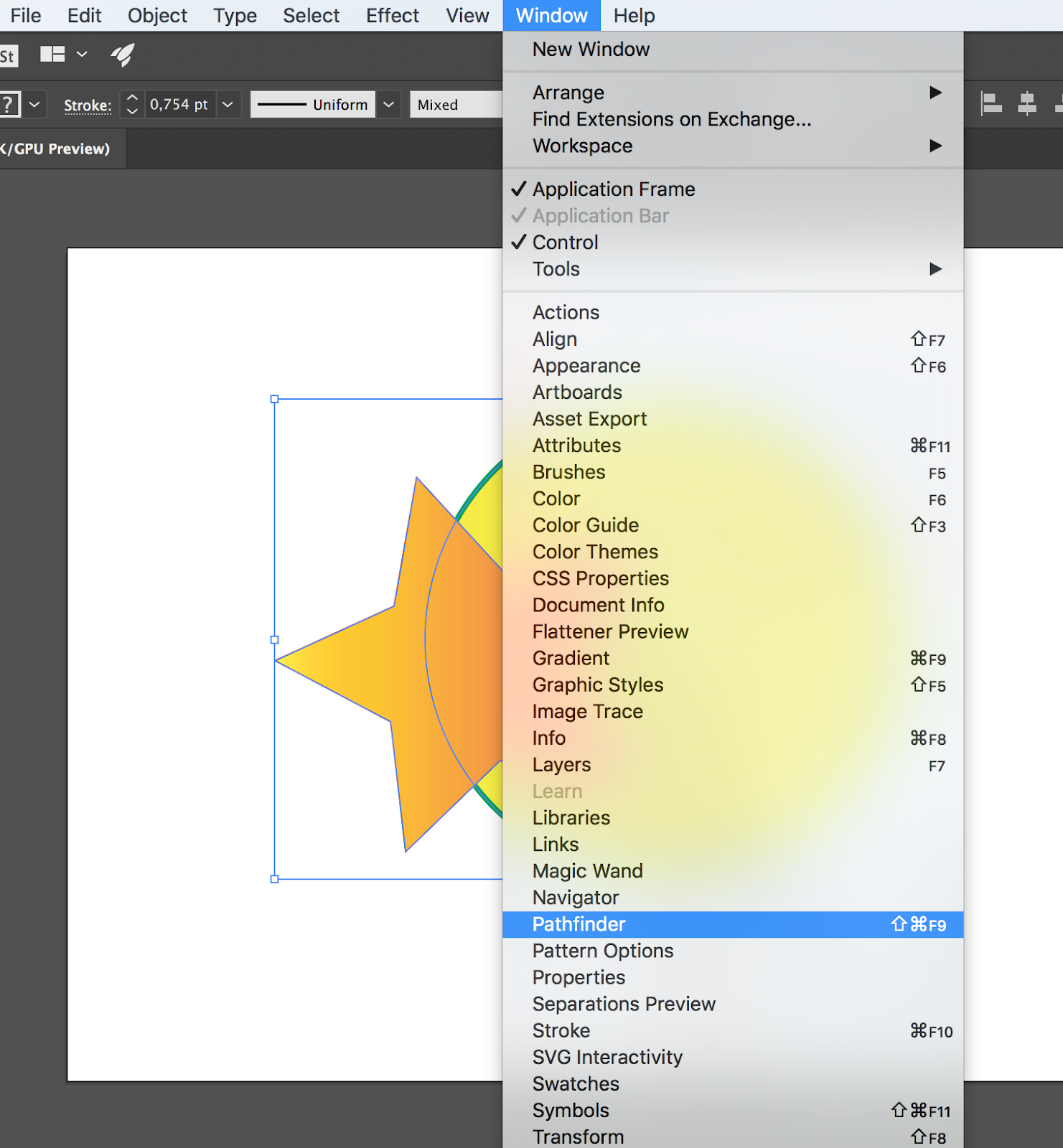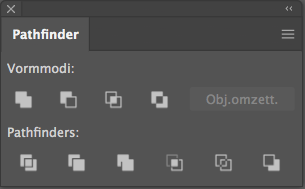

In addition, please note that unlike the Shape modes, Compound Shapes are not created. *The objects applied the Pathfinder are grouped. To move detached objects, use the “Direct Selection Tool” (white arrow) in the tool bar. In the next section, we will see 6 different types of pathfinders. In this case, the object is filled with the foremost object’s color. Make the area two objects are overlapping transparent. In this case, the color of the foremost object remains. It leaves only the most overlapping area. It crops multiple overlapping objects by the front object’s shape (Not the foremost one.). The color of the foremost object is selected. This time we will use these sample shapes.įirst, show the Pathfinder panel. You can easily create shapes and complex paths that are difficult to draw with the Pen tool. Pathfinder is a feature that allows you to merge or cut out objects made of paths. The Minus Back is opposite of the Minus Front command it removes the bottom shape layer and its overlap, revealing the top layer of the circle.In this article, I’m going to introduce the Pathfinder in Illustrator. These outlines can then be individually selected with the Selection Tool (V) when ungrouped with Shift+Command+G. Just as the name mentions, the Outline pathfinder creates an outline of the shapes selected. This command crops the existing shapes and leaves behind the overlapping area along with the shape path of the top layer, like the outline of the circle above. When applied to three shapes, two of them being the same hue, the Merge action joins the two yellow shapes and trims the outline of the other blue polygon. The Merge pathfinder is similar to that of the Trim command when applied to two multicolored shapes. This is similar to taking scissors to multiple shapes glued together and trimming around the edges of each overlapping polygon. Trim pathfinders cut away the top shape layer from the revealing bottom layer. The Divide pathfinder breaks up the existing shapes into top, overlap, and bottom layers to create three distinct paths. Pathfinder commands alter existing paths, shown by line segments these actions don’t typically form new shapes, but rather break the existing compound shapes into distinct paths. The Exclude shape mode eliminates the overlapping area and leaves behind the remaining polygons to create a complex shape. Intersect actions create a new shape by revealing the overlapped area and removing the top and bottom shape layers. The Minus Front shape mode eliminates the top shape layers and any overlaps, leaving behind the bottom shape and color.

This tool is ideal for building complex vector shapes and joining them together.

The Unite action combines two or more shapes into one cohesive polygon. These actions create new and unique polygons of a single color. Shape Modes alter the final shape by uniting, excluding, intersecting, or eliminating separate layers.

Select two or more adjoining polygons with the Selection Tool (V) while holding down the Shift key, then group the shapes with Command+G for best results. This palette works best when applied to multiple different shapes. For this overview, we will go over the results of each pathfinder when applied to the compound shape below. Navigate to Window > Pathfinder in Illustrator to bring up the Pathfinder palette. You can create custom shapes and paths by using the versatile Shape Modes and Pathfinders within the panel. Use this tool to easily create one-of-a-kind shapes in just one click.Īdobe Illustrator’s Pathfinder panel is one of the most beneficial in the entire program. The Pathfinder palette is a huge timesaver when creating detailed vector designs in Adobe Illustrator.


 0 kommentar(er)
0 kommentar(er)
